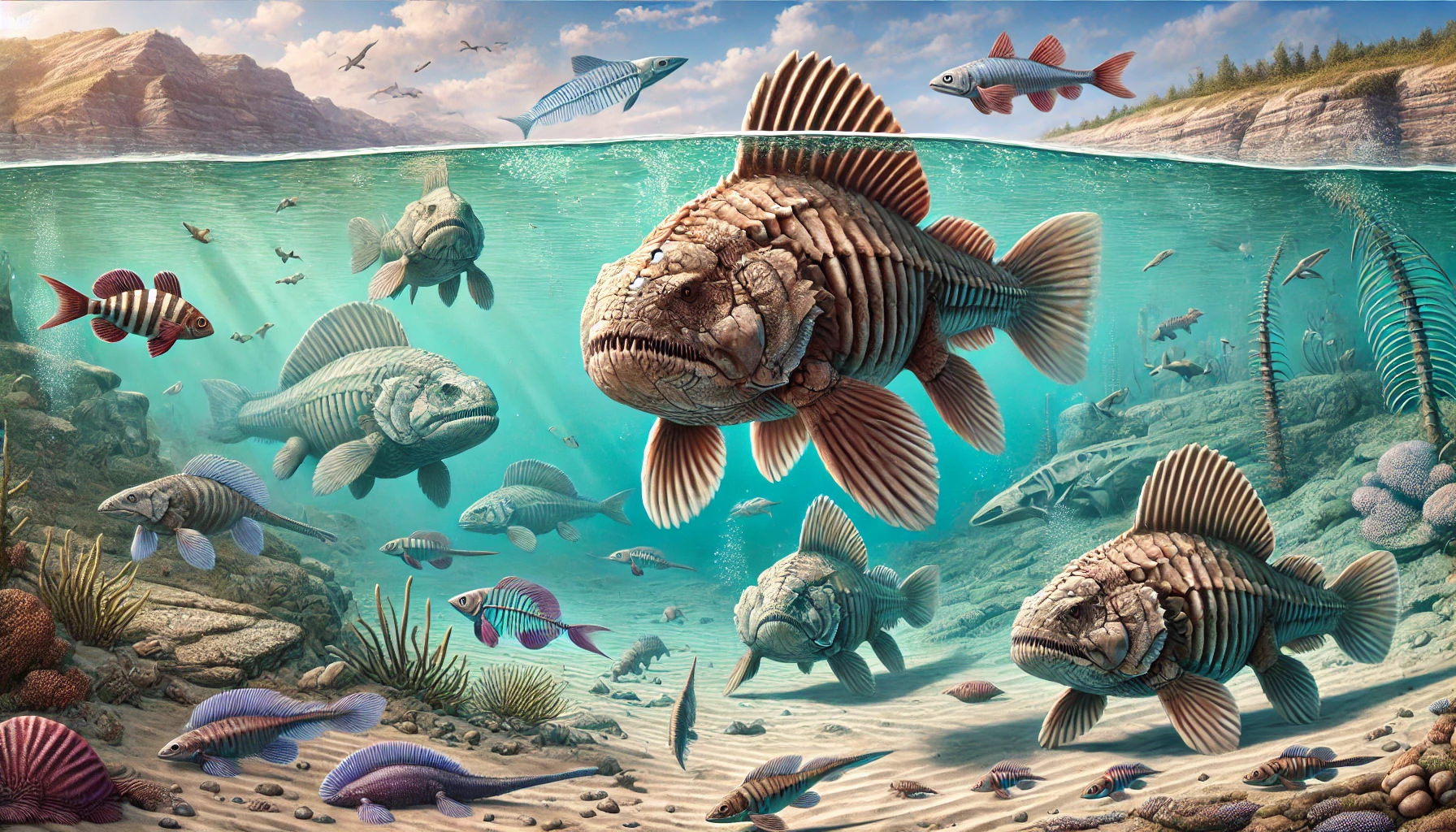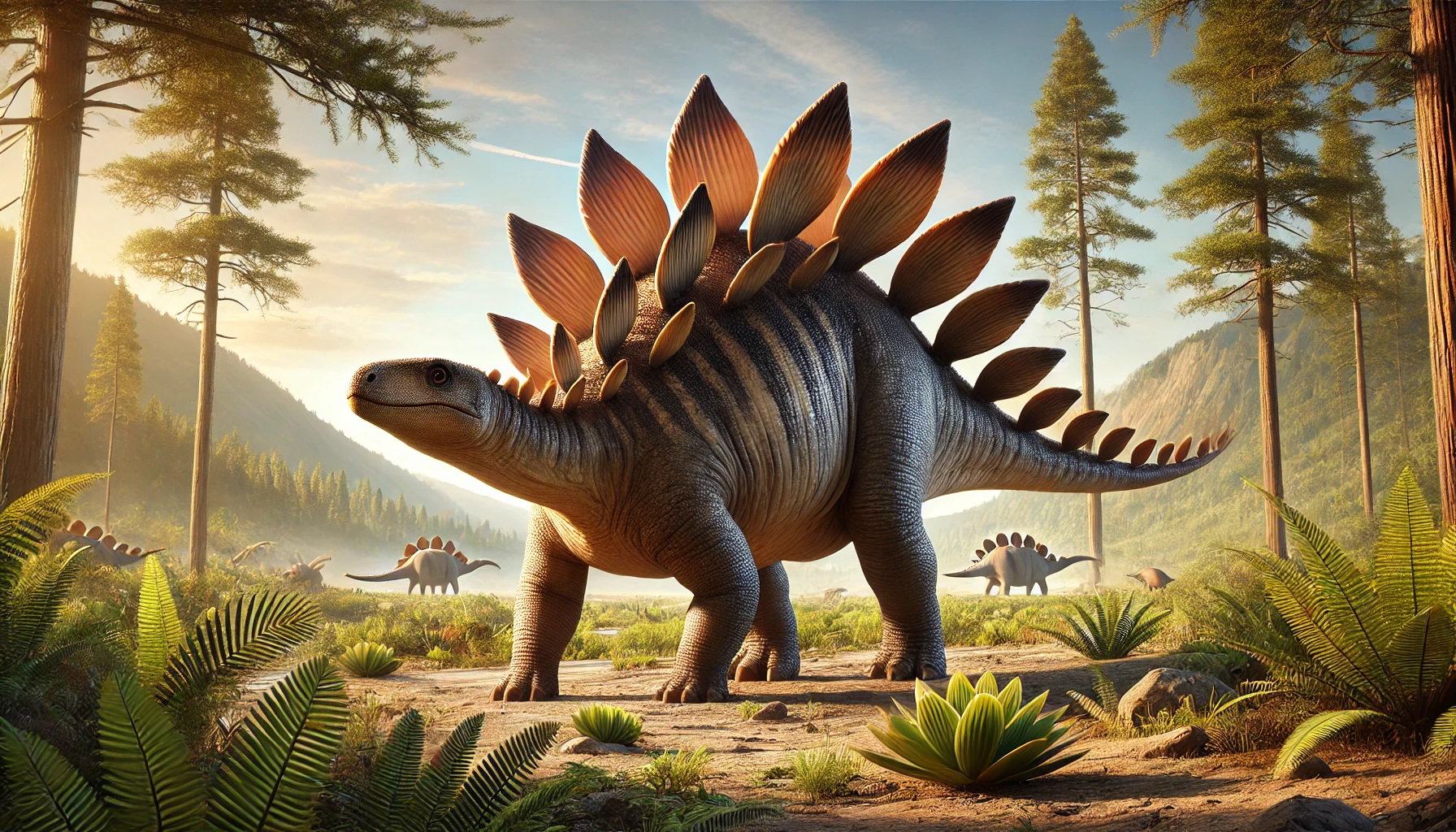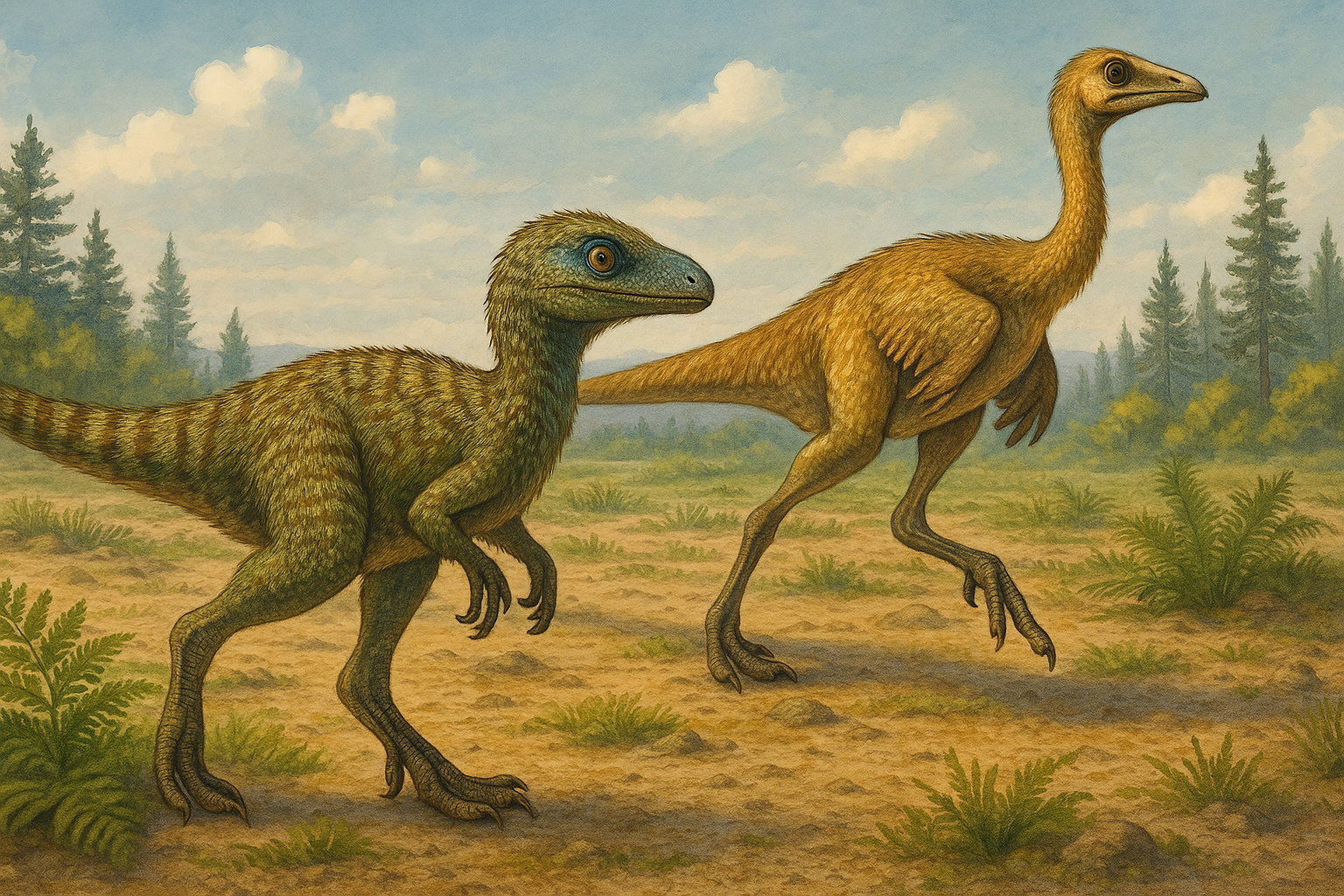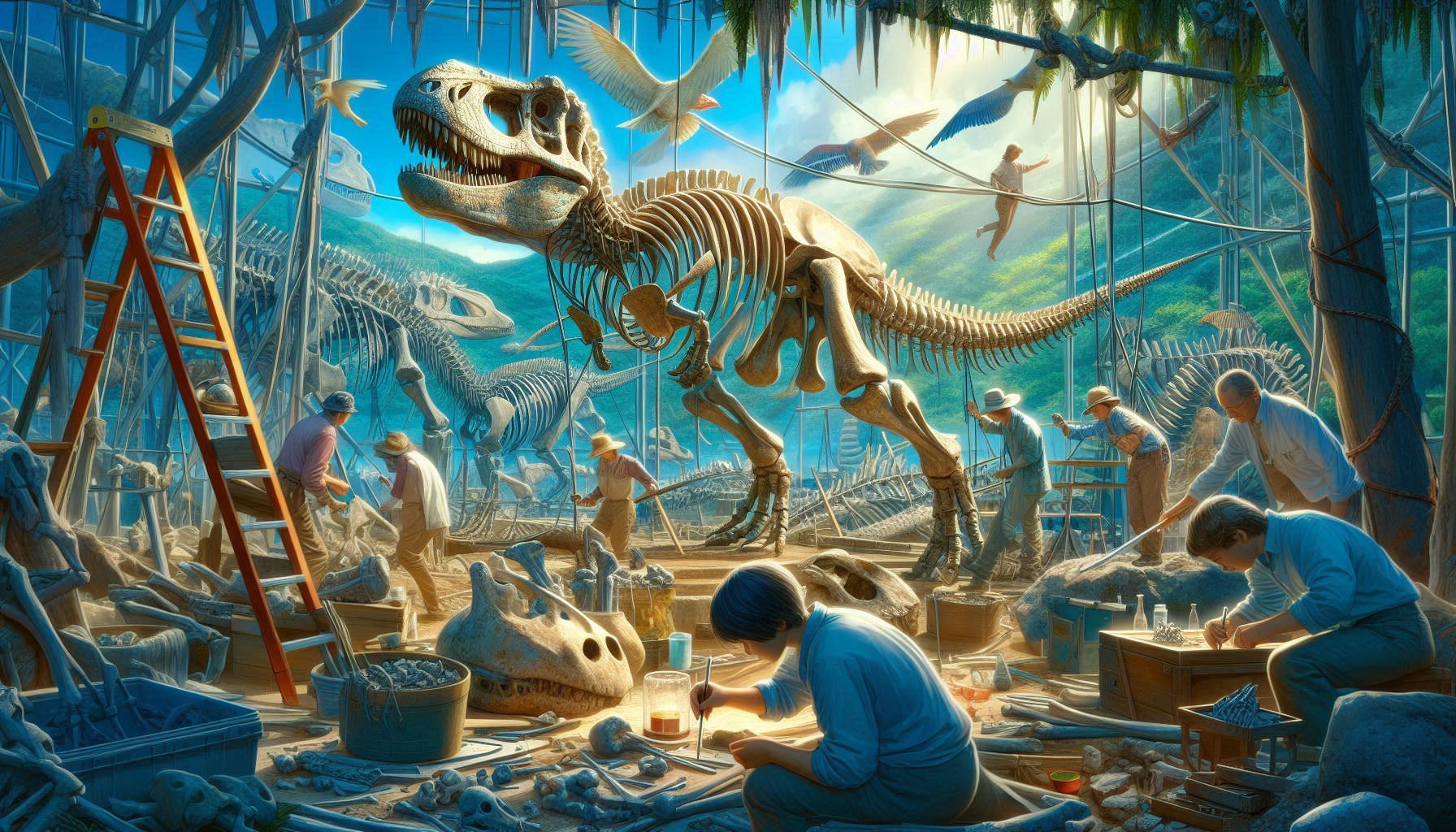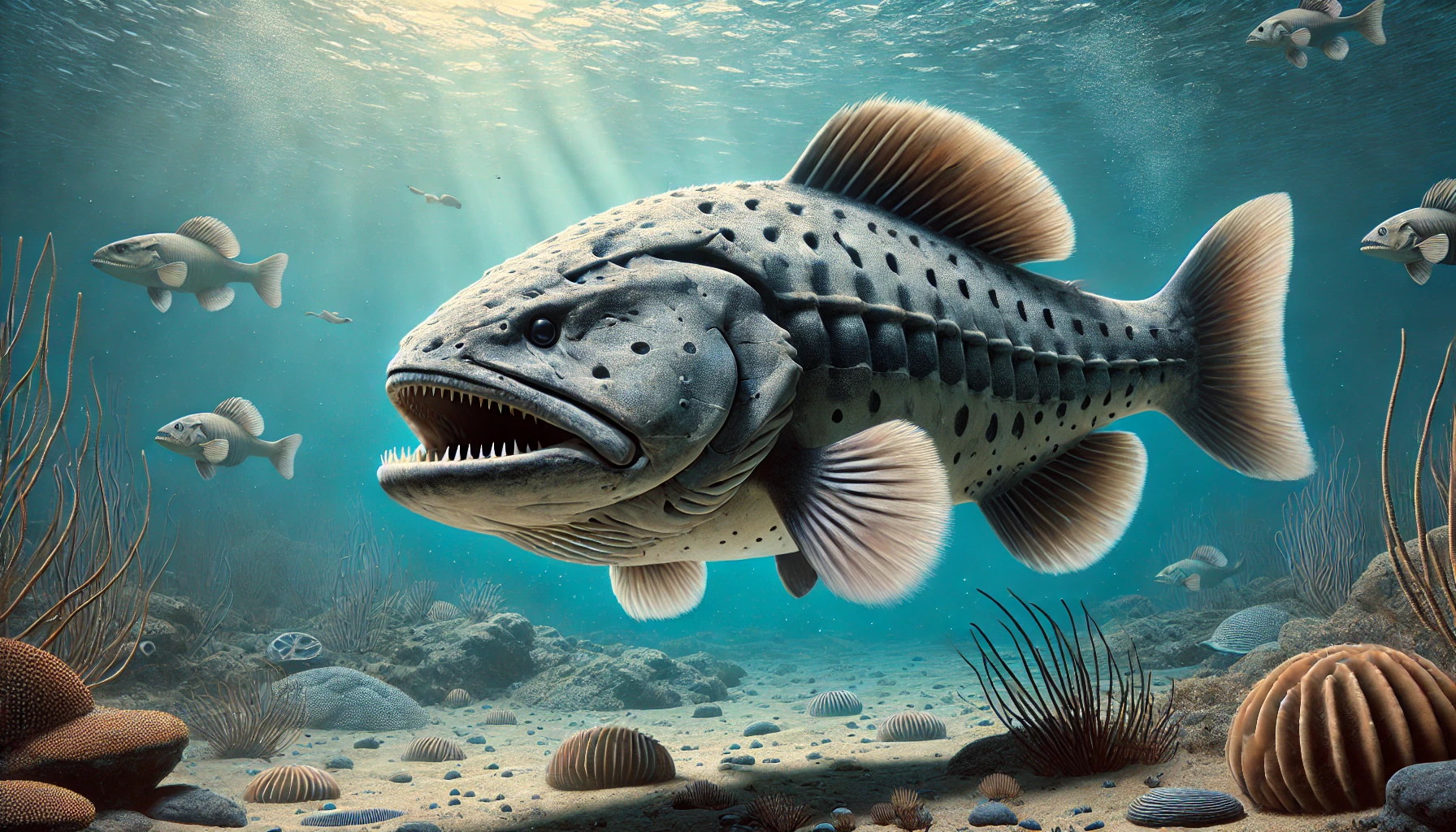- Placoderms: The Armored Pioneers of Prehistoric Seas
- What Are Placoderms?
- A Look Back in Time: When Placoderms Ruled
- Why Are Placoderms Important?
- Jaws Evolved Here
- First Signs of Reproduction
- Armored Evolution
- Types of Placoderms
- Arthrodires
- Antiarchs
- Rhenanids
- Petalichthyids
- What Do Placoderm Fossils Look Like?
- Fun Facts About Placoderms
- FAQ
- What are placoderms
- When did placoderms live
- Why are placoderms important
- Did placoderms have teeth
- Are placoderms related to modern fish
Placoderms: The Armored Pioneers of Prehistoric Seas
Before sharks ruled the oceans, before dinosaurs stomped the Earth, there was a group of strange, armored fish that dominated the underwater world: placoderms.
These early vertebrates weren’t sleek or graceful. They were bulky, heavily armored, and often equipped with bizarre jaws that could crush, slice, or suck in prey. Despite their fearsome appearance, placoderms were trailblazers — some of the first fish to develop jaws, and possibly even the first creatures to show signs of internal fertilization.
What Are Placoderms?
Placoderms (from Greek plakos = plate, derma = skin) were a class of extinct armored fish that lived during the Paleozoic Era, primarily from the Silurian to Devonian periods — roughly 430 to 360 million years ago.
They were among the earliest jawed vertebrates, a major evolutionary step from jawless fishes like lampreys. Their name comes from the bony plates that covered their heads and the front part of their bodies, acting like natural armor. The rest of their body was often soft and cartilaginous, which is why full fossils are rare.
A Look Back in Time: When Placoderms Ruled
The Devonian Period, sometimes called the “Age of Fishes,” was their golden era. Placoderms flourished in both freshwater and marine environments, from shallow coastal lagoons to open seas.
They came in all shapes and sizes:
- Some were no larger than your hand
- Others, like Dunkleosteus, could grow over 30 feet (10 meters)
By the Late Devonian, placoderms were incredibly diverse, with over 200 known genera.
But then — they vanished. Like many marine organisms, placoderms went extinct during the Late Devonian mass extinction, about 360 million years ago.
Why Are Placoderms Important?
Jaws Evolved Here
Before placoderms, all vertebrates were jawless. Placoderms represent the earliest known jawed vertebrates, a huge leap in evolutionary complexity. Their jaw structures varied, from slicing blades to crushing plates.
First Signs of Reproduction
Some placoderm fossils — notably from Australia — show evidence of internal fertilization and even live birth (viviparity). This is millions of years before other animals evolved such features.
Armored Evolution
Their bony headplates acted as early examples of protective body structure in vertebrates — laying groundwork for skeletal development in future species.
Types of Placoderms
Arthrodires
The largest and best-known group. Includes Dunkleosteus and Coccosteus. They had flexible neck joints, armored heads, and powerful biting jaws.
Antiarchs
Small, bottom-dwelling freshwater placoderms with long armored fins used to scoot along the seabed. Example: Bothriolepis.
Rhenanids
Flattened, ray-like fish with mosaic-style bony plates. Likely bottom-feeders that stayed close to the seafloor.
Petalichthyids
Small, spiky armored placoderms found in shallow marine deposits. Their exact placement in the placoderm tree is still debated.
What Do Placoderm Fossils Look Like?
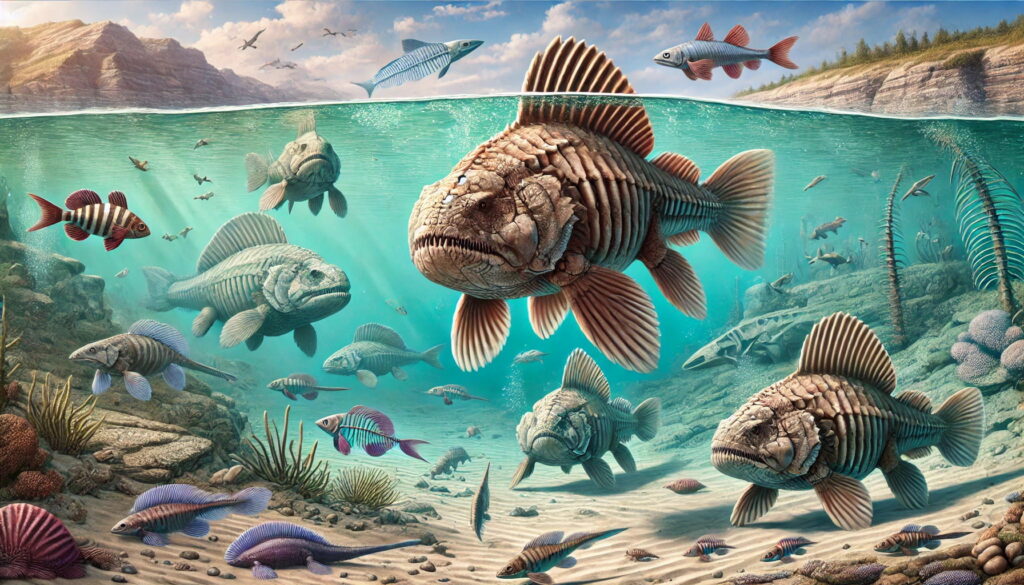
Most placoderm fossils show only the front armored section of the fish. The soft-bodied rear rarely fossilized. Their bony head shields are often found in shale or limestone.
Fossils have been discovered on almost every continent, particularly in:
- North America (especially Ohio and Pennsylvania)
- Western Australia (Gogo Formation)
- Germany and Scotland
- Morocco and China
Some fossils are so well-preserved that they show fine details like nerves and developing embryos.
Fun Facts About Placoderms
- Some species had jaw joints that sharpened themselves through motion.
- The oldest known vertebrate pregnancy was found in a placoderm fossil — complete with umbilical cord!
- Placoderm braincases were unusually complex for their time.
FAQ
What are placoderms
Placoderms are extinct armored fish that lived from the Silurian to the Devonian period, about 430 to 360 million years ago. They were among the first jawed vertebrates.
When did placoderms live
Placoderms thrived primarily during the Devonian period, which is often called the Age of Fishes, and went extinct around 360 million years ago.
Why are placoderms important
They were the first known vertebrates with jaws and possibly the first to give live birth, making them a key group in the evolution of vertebrates.
Did placoderms have teeth
Not in the modern sense. They had bony plates that acted like jaws and often functioned as slicing or crushing tools.
Are placoderms related to modern fish
No, placoderms are a completely extinct group with no direct descendants, though they share distant ancestry with modern jawed fish.
prehistoric armored fish, devonian period animals, early jawed vertebrates, extinct fish species, bony plates in placoderms, placoderm reproduction, ancient fish evolution, dunkleosteus ancestor, paleozoic marine life, fish with armored head, placoderm fossil sites

